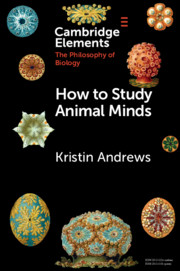Element contents
How to Study Animal Minds
Published online by Cambridge University Press: 16 June 2020
Summary
- Type
- Element
- Information
- Online ISBN: 9781108616522Publisher: Cambridge University PressPrint publication: 25 June 2020
Bibliography
- 28
- Cited by



